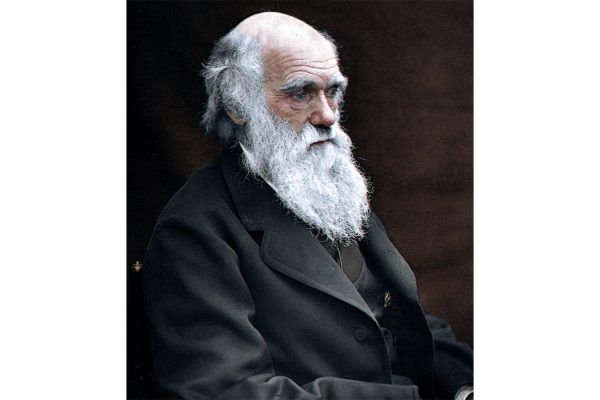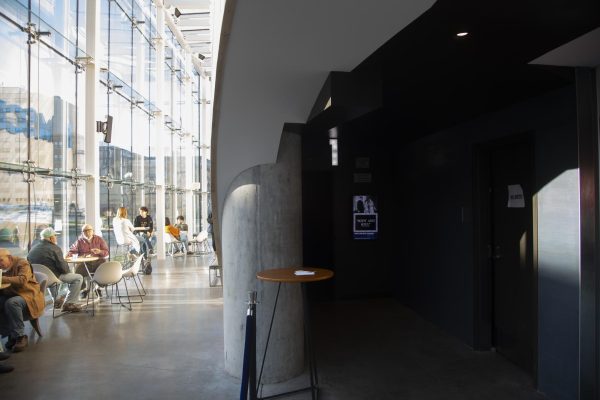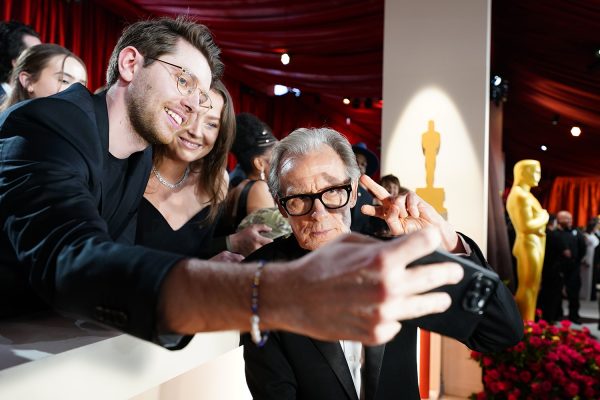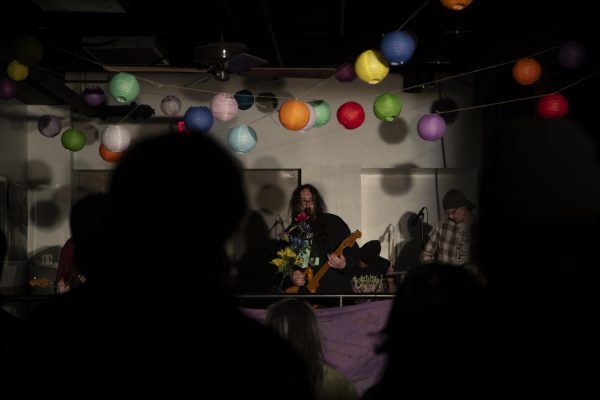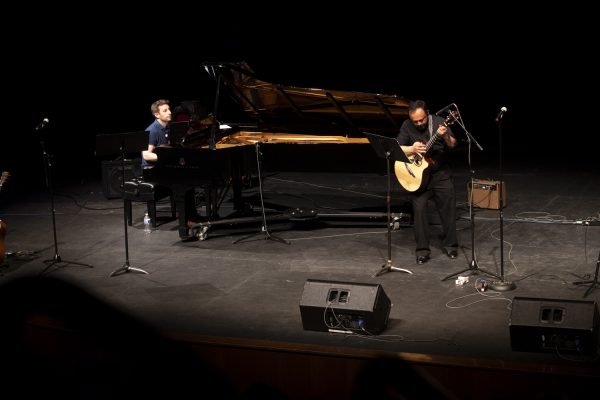Frankenstein celebrates its 200th birthday
Mary Shelley’s Frankenstein celebrated its 200th anniversary yesterday with the Iowa City Book Festival
The Old Capitol building is lit up with a Frankenstein light display on Wednesday, Oct. 3, 2018. International light artist Gerry Hofstetter chose the building as a backdrop to feature artwork included in his “Light Art Grand Tour USA.”
October 4, 2018
Mary Shelley was 18 years old when she began to write her first novel, Frankenstein. She had the idea while on vacation with her fiancé, Lord Byron, John William Polidori, and Claire Clairmont near Geneva, Switzerland. She was only 19 years old when it was first published in 1818. The story was shocking and intriguing for the people of the time and it seems that the shock-value and intrigue of this storyline is still very much alive today.
Anna Barker (Assistant Professor of Russian and Comparative Literature at the University of Iowa and the Visiting Assistant of UNESCO) was the coordinator of all the Frankenstein-related on Oct. 3. She has been in charge of the public readings in past years, choosing books that are “celebrating an anniversary that year”. In 2015, the book that was chosen was Don Quixote, this year was Frankenstein, and next year will be War and Peace.
“All the books we’ve covered have huge significance in our culture, outside of the publication itself,” Anna Baker stated in a previous interview with The Daily Iowan, “We try to embrace the book, not only as a singular event but an event that has history within the culture. And Frankenstein was a prime candidate for this because Frankenstein has such a huge presence in popular culture, primarily through film adaptations. And it’s astonishing that this novel was written 200 years ago and still has such huge relevance to our culture, especially today in the age of coding and genetic research.”
The public reading was the first event on the Frankenstein agenda. It started at 9 a.m. and went until 5:30 pm, with readers signing up to read for 20-minute intervals. The event took place in front of the Old Capitol, with readers and listeners sitting on the steps of the Capitol. The weather was hot and was considerably windy in the afternoon, but the readers and listeners still powered through. The readers became choked up during some parts of the novel, some even having to take breaks throughout because of how emotional they were getting. Frankenstein’s
Fons read the final pages of the novel, something she was ecstatic about.
“I was fascinated by the story, because it’s a great story, but I was particularly interested in Mary Shelley, the author, because she had an incredible life,” she said. “People often call Frankenstein a ‘Russian Doll’ because it’s a story within a story.”
She has even gone as far as to write a novel titled My Life With Shelley, an historical fiction about the author’s life. Shelley’s influence hasn’t faded out 200 years after the first publication of this novel.
After the public reading was finished, a panel discussion was held at the Iowa City Public Library about the books that the creature in the novel read. The panelists included Eric Gidal, Waltraud Maierhofer, Blaine Greteman, and Jeffrey Beneker. The novels that were discussed were Milton’s Paradise Lost, Plutarch’s Lives, and Goethe’s The Sorrows of Young Verther. The panelists discussed the historical significance of the novels read by the creature, how they tied into the overall story of Frankenstein, and their significance in society today.
“…It’s such an interesting book about books, it has reading right in the middle of it and all these encounters with books and the notion that books can shape your identity in really powerful ways,” Blaine Greteman, an English professor at the University of Iowa, said.
The final act of the day was the double feature of Frankenstein and Bride of Frankenstein at FilmScene.
“Frankenstein and Frankenstein’s monster are such cinematic characters and have been realized on the big screen so many times that this was such a perfect fit,” Rebecca Fons, the Programming Director at FilmScene, said. “I think the idea of Frankenstein‘s monster — the monster with no name – it’s been really fascinating because Frankenstein’s monster is made of several different parts and I think it speaks to the idea that we sort of compartmentalize ourselves and there are different aspects of ourselves that we present to people in different ways.”
The double feature had 50 patrons, which is nearly a full-house as FilmScene has 65 seats.
Frankenstein’s influence is potent, even 200 years later. The story of a medical student creating life from death intrigued people 200 years ago and it still intrigues people of today. At this rate, it seems like it would be fair to say that this novel and story will be stuck in people’s heads for a very long time.







